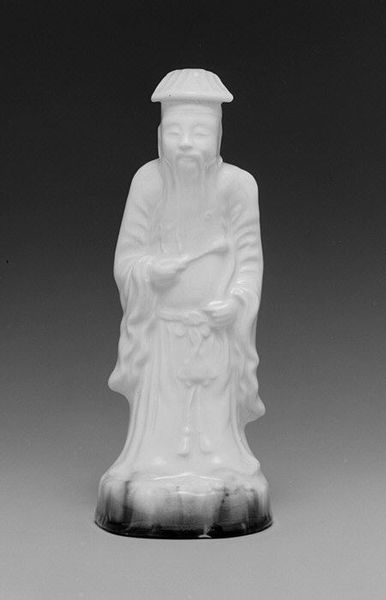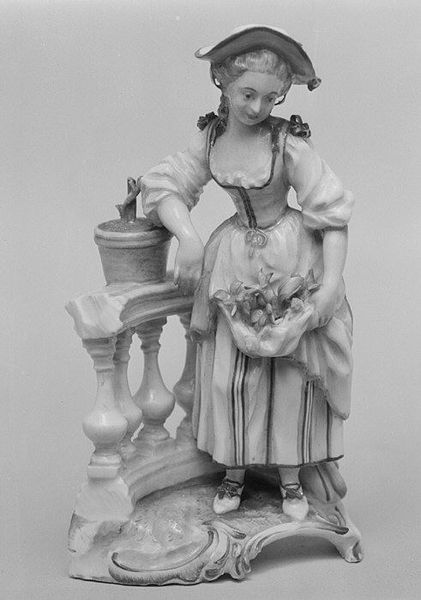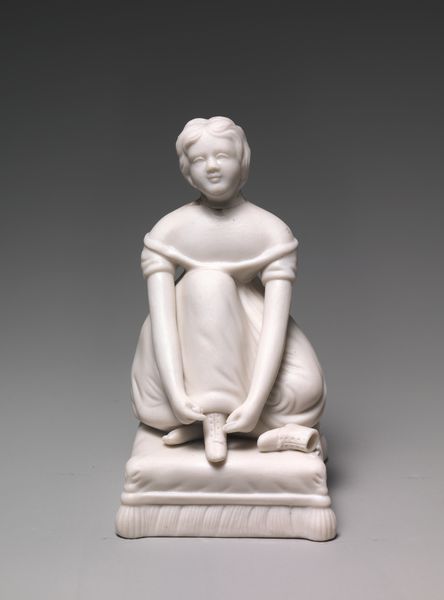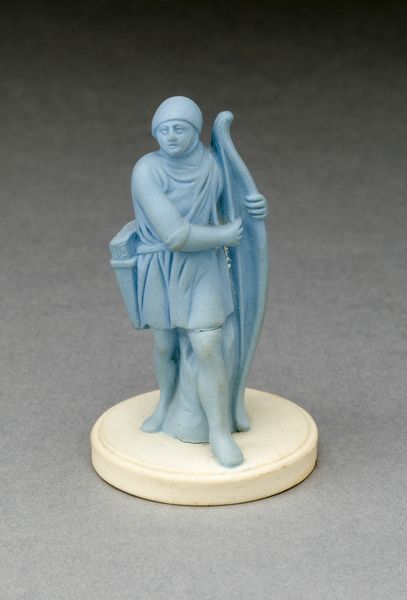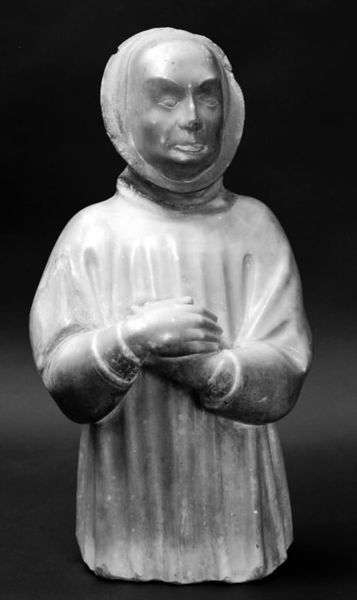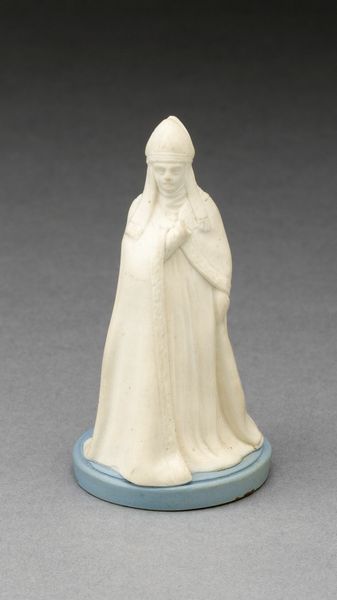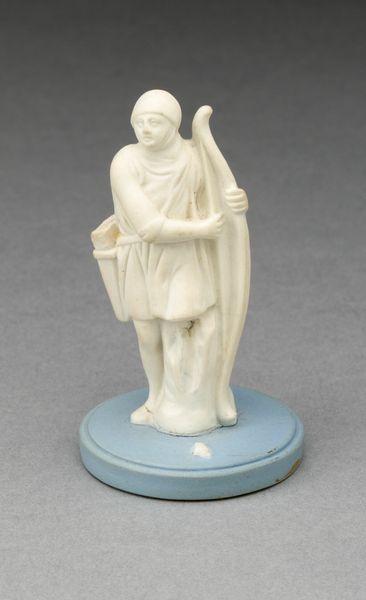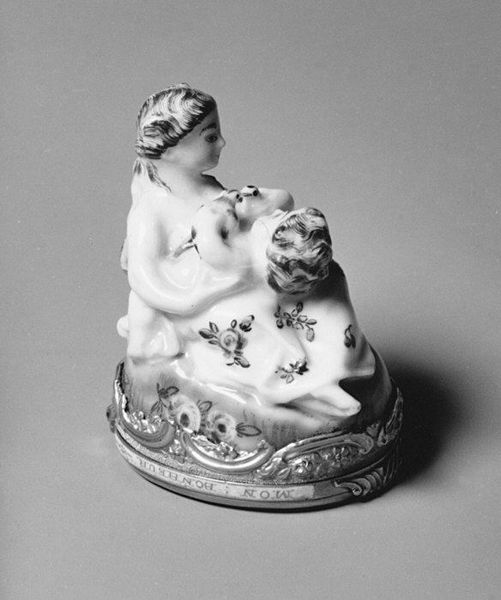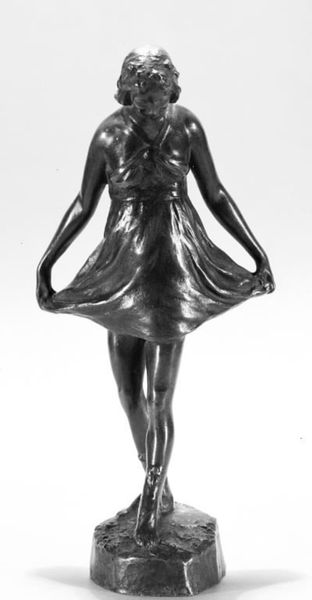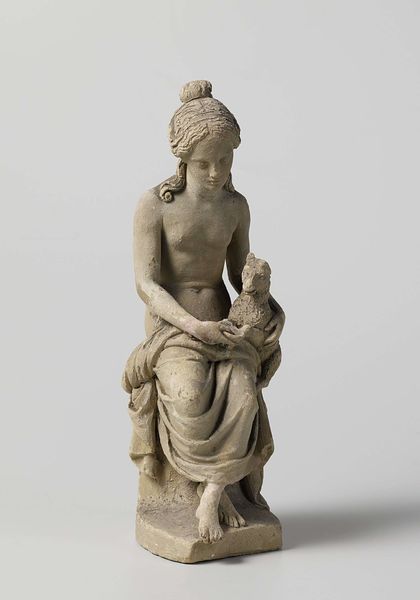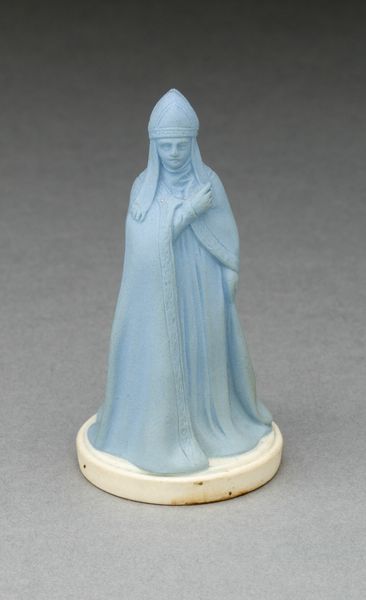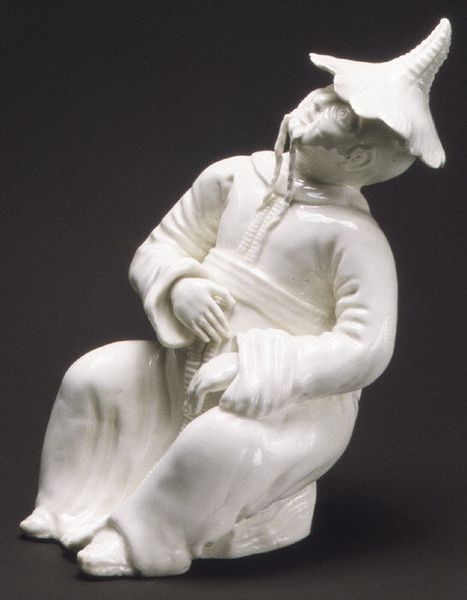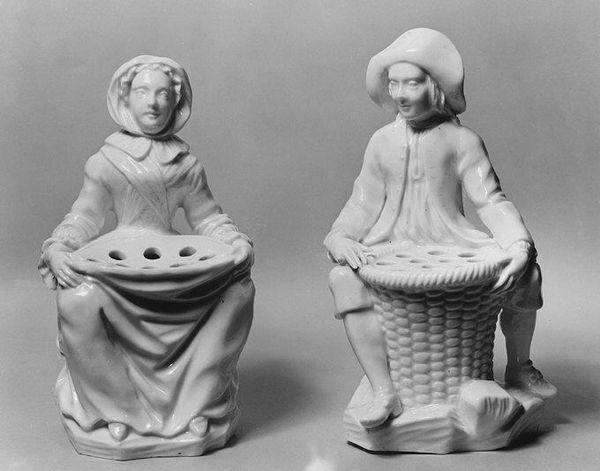
carving, earthenware, sculpture
#
portrait
#
carving
#
sculpture
#
figuration
#
earthenware
#
sculpture
#
men
Dimensions: 4 5/8 x 2 9/16 x 2 7/8 in. (11.7 x 6.5 x 7.3 cm)
Copyright: Public Domain
Editor: Here we have "Figure of Praying Samuel," crafted between 1852 and 1858 by the United States Pottery Company. It's an earthenware sculpture, small and, in a way, quite charming. What strikes me is the...almost mass-produced quality of it. What are your thoughts? Curator: That perceived "mass-produced quality" is precisely where I’d like to focus. Consider the economic and social context. During this period, there was growing tension between handcrafted goods and industrially produced items. A piece like this, made from earthenware, a relatively inexpensive material, was likely marketed to a rising middle class. Editor: So, you’re suggesting it reflects a shift in how people acquired art, moving from exclusive patronage to broader consumption? Curator: Exactly. Think about the labor involved. Earthenware is more easily molded than carved, allowing for quicker reproduction. This wasn’t about individual artistry in the traditional sense but rather the systematization of production. Is it art or commodity? A devotional object, or a symbol of aspiration to social standing? What impact do you imagine the advent of molded forms like this had on craftspeople reliant on carving techniques, who might see this object as representative of their looming economic displacement? Editor: That’s a powerful perspective. It completely shifts how I see it, less as a quaint object of piety and more as an artifact of industrial change. It embodies those tensions... Curator: Precisely! We are witnessing a change in modes of production and the ways in which devotional icons were produced and consumed. Editor: This makes me think about how even seemingly simple objects can tell us so much about shifts in production, labour, and consumer culture. Curator: Indeed, seeing art through a material lens really opens it up.
Comments
No comments
Be the first to comment and join the conversation on the ultimate creative platform.
